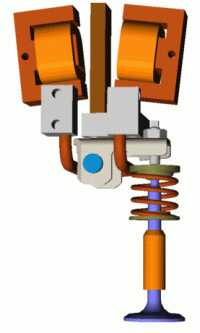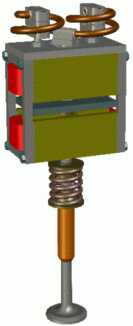Electromagnetic Variable Valve Timing (EVVT) opens a new
frontier for improving internal combustion engines. Scrapping the traditional
timing belt and camshaft and exerting
full computer
control of valve timing, one gets
better
mileage,
better performance, and
lower emissions.
Mechanical VVT gets part way there, while EVVT
does considerably better, competing with
diesel efficiency, getting the most out
of
hybrid vehicles, and helping to turn
HCCI from a laboratory dream into a real
possibility. Hydrogen fuel cells may be the solution for a more distant
future, but between now and 2020, EVVT holds the key to significant improvements
in both
automotive-scale and
small engines.
Why isn’t EVVT already in the
marketplace?
It’s been a dream since the first patent over 50 years ago, but it’s hard
to do right. The business of Magnesense is solving the
tough problems of cost, speed, complexity,
and reliability, allowing the technology to move forward.


